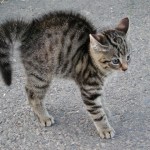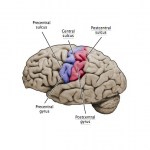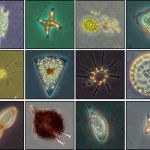Visual Perception
Lots of animals are well aware that bigger means scarier. In stressful or aggressive situations, for example, the hair or fur of chimpanzees, rats, cats, and even humans stands up on end (in humans, given our lack of fur, this results in goose bumps) in an effort to dissuade a potential attack. Elephant seals use a display called "rearing up" to make themselves look bigger - as if they need to look bigger in the first place!
Since some animals tend to be good at looking bigger than they truly are, visual cues may not actually be a reliable method of sizing up another individual. In addition…
This talk, from last spring's TEDxUSC (for those not in the know, USC held the first ever TEDx event, in 2009), is made of awesome, and worth watching in its entirety. It will be especially interesting for those who have read The Invisible Gorilla.
As I'm always looking for good teaching tips, here are a few good things that the presenter, Al Seckel, did.
1. His powerpoint, with few exceptions, is mostly not-text. When there is text, it is limited to just a few bulletpoints. (this is true until the last 3-4 minutes, when it gets too text-heavy)
2. He uses still images, videos, audio, and…
There are some great questions coming in to Ask a Scienceblogger! If you (or your kids?) have a question you want answered by a scienceblogger drop by Page 3.14 (the blog of the SB overlordz) and leave your question in the comments on this post.
Tyler asked:
It's said that the left hemisphere of the brain controls the right half of the body and vice versa. Does this apply to the processing of audio and visual stimulus of the ears and eyes as well? Does the left half of the brain process what the right eye sees and vice versa?
There's actual a few questions in here, so let's break this apart…
Today for Monday Pets, we're going to go old school and talk about vision.
Vision is arguably our most (intentionally) utilized sensory system, so its pretty important to figure out how it works. And it's what David Hubel and Torsten Wiesel set out to investigate starting in the late 1950s. Ultimately, their work would get them a Nobel Prize in Physiology or Medicine, in 1981.
Basically, they took a bunch of cats, anesthetized them, and showed them patterns of light on a screen. Meanwhile, some microelectrodes were placed in various precisely determined spots in the cat's visual cortex, and…


